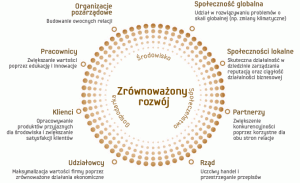In November in the Augustów Forest will appear up to 40 new tenants – western capercaillies, birds that are one of the rarest in Poland.
The spokeswoman for the National Forests, Anna Malinowska told PAP that the forty capercaillies came to Poland on Thursday afternoon. The birds were brought from Russia.
Malinowska indicated that the Augustów Forest is one of the last natural refugees for the birds. What was once a large population, now has been strongly reduced by hunting. Malinowska explained that there are 30 to 35 individuals in the forest. These birds can be also found in Lower Silesia. Capercaillie population in Poland has approximately 350 – 450 individuals. In the early twentieth century there were approximately 3000 birds.
Malinowska has announced today that the Forest District of Głęboki Bród and the Forest District of Ruszów have been carrying out a project devoted to the protection of capercaillies since 2012. One of its plans is to rebuild and protect the gene pool of these birds.
Before the Russian capercaillies crossed the Polish border they had been thoroughly tested. The analysis confirmed the genetic compatibility of the Russian birds with those of the Augustów Forest.
The National Forests emphasize that the reinforcement of the population occurred at the last minute.
– Extremely sparse existing population requires both new genes and an increase of the number of individuals in the capercaillie’s population. This is an enormous project that can stop a rapid decline in the Augustów capercaillie population.
Currently, the birds are kept in aviaries. When the period of adaptation and observation is finished, the capercaillies will be released into the wild. This is to take place in November. In subsequent years, capercaillies will also be released in Augustów Forest District and Płask Forest District.
The capercaillie is the largest and the rarest grouse representative in Poland. In Poland it lives in four isolated populations in the south and the east of the country. Over the past 30 years, capercaillies disappeared from Pomerania, including the Tuchola Forest.
Since 1995, these birds are under strict protection. The capercaillie is listed in the “Polish Red Book of Animals” as a critically endangered species. Not only the animals themselves, but also their tooting grounds, nesting, feeding and wintering places are subject to protection.
The capercaillies are most numerous in Russia, where they live approximately 1.4 million. In Europe approximately 200 thousand of these birds live in Sweden, Finland and Norway.(PAP)






